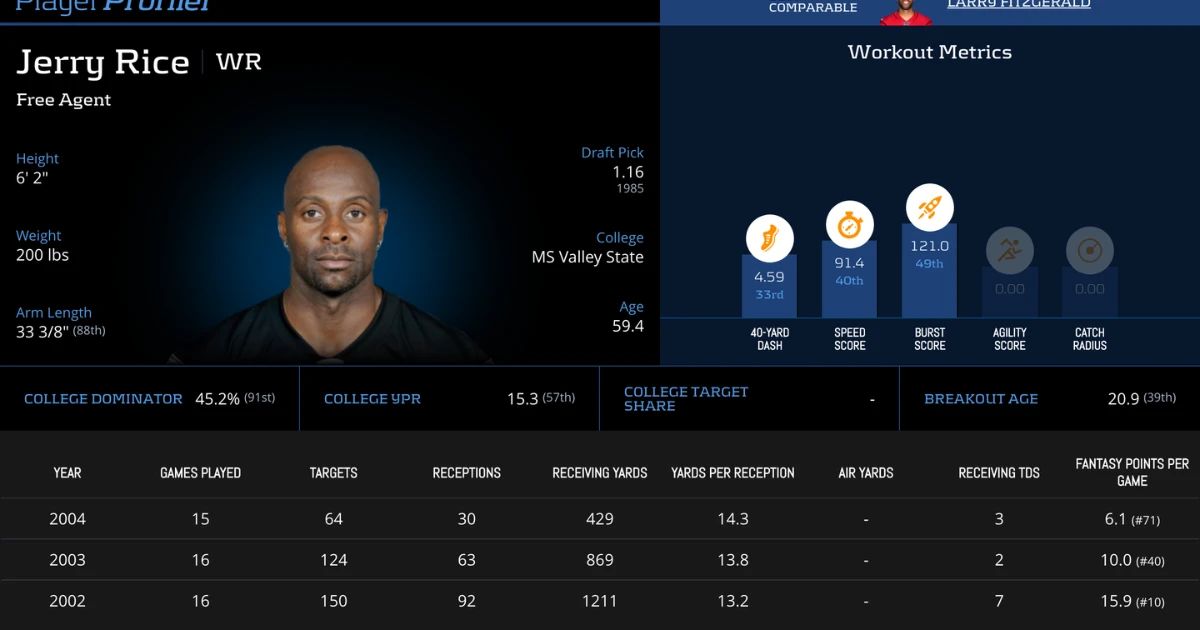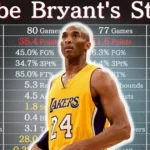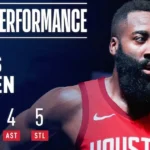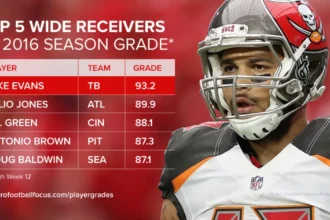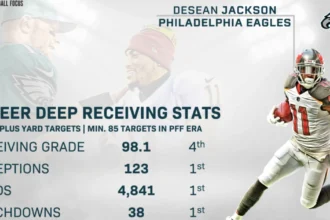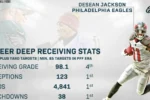Hey there, football fans—or maybe you’re just curious about one of the all-time sports legends. If you’ve ever watched a game and marveled at a receiver who seems to glide through defenders like they’re standing still, you’ve got Jerry Rice Career Stats to thank for setting that impossibly high bar. Jerry Rice isn’t just a name in the record books; he’s the gold standard for wide receivers, the guy who turned catching passes into an art form. Born on October 13, 1962, in Starkville, Mississippi, Rice built a career that spanned 20 incredible NFL seasons, amassing stats that still stand as untouchable benchmarks today.
In this article, we’re diving deep into Jerry Rice’s career stats—those eye-popping numbers that tell the story of his dominance. We’ll keep things straightforward, like chatting over a backyard barbecue, so whether you’re a die-hard 49ers fan reliving the glory days or a young sports enthusiast discovering a hero for the first time, you’ll walk away feeling inspired. We’ll break down his journey, highlight key seasons, and of course, lay out a full table of his year-by-year stats. By the end, you’ll see why Rice isn’t just great—he’s revolutionary. Let’s kick off with how it all began.
From Small-Town Roots to College Stardom
Jerry Rice grew up in a tight-knit family in Crawford, Mississippi, where his dad was a brickmason who taught him the value of hard work from a young age. Rice was no stranger to labor; as a kid, he helped build bricks alongside his father, stacking them perfectly even in the sweltering Southern heat. That grit? It translated straight to the football field. At B.L. Moor High School, Rice was a track star and a budding football talent, but it was at Mississippi Valley State University where he truly exploded onto the scene.
From 1981 to 1984, Rice played for the Delta Devils in the Southwestern Athletic Conference—a smaller stage than the big-time programs, but that didn’t stop him from rewriting the record books. He racked up 301 receptions for 4,692 yards and a whopping 50 touchdowns over four seasons. That’s right—50 touchdowns in college! His senior year alone saw him haul in 112 catches for 1,845 yards and 27 scores, earning him All-America honors and setting 18 Division I-AA records. Scouts might have raised eyebrows at the competition level, but Rice’s speed, hands, and relentless work ethic were impossible to ignore. By draft day in 1985, the San Francisco 49ers snapped him up with the 16th overall pick. Little did they know, they were getting the greatest receiver the league would ever see.
Rice’s college days taught him something crucial: talent alone doesn’t win games; preparation does. He’d run “Gatorade showers”—sprints in the Mississippi heat while wearing trash bags to sweat out impurities. That discipline became his superpower in the pros.
The Rookie Who Arrived: Early Years with the 49ers (1985-1989)
Jerry Rice hit the NFL like a freight train. As a rookie in 1985, he wasn’t thrown into the fire right away—coach Bill Walsh eased him in—but when he got his chances, Rice delivered. He finished with 49 catches for 927 yards and 3 touchdowns, averaging an eye-popping 18.9 yards per reception. Not bad for a guy adjusting to the big leagues. But 1986? That was the year the world took notice.
Teamed up with quarterback Joe Montana in Walsh’s revolutionary West Coast offense, Rice exploded for 86 receptions, 1,570 yards, and 10 touchdowns. He led the league in receiving yards and earned his first Pro Bowl nod. The 49ers made it to the playoffs, and Rice’s postseason debut was electric: 8 catches for 101 yards in a divisional win. By 1987, even a players’ strike couldn’t slow him down. In just 12 games, he posted 65 catches for 1,078 yards and a league-leading 22 touchdowns—yes, 22 in a shortened season! That earned him his first of two Offensive Player of the Year awards.
The pinnacle came in Super Bowl XXIII after the 1988 season. With the 49ers trailing the Cincinnati Bengals 16-13 in the final minutes, Montana orchestrated “The Drive”—a 92-yard march capped by a game-winning touchdown pass to John Taylor. But Rice was the spark, hauling in 11 catches for 215 yards and a score earlier in the game. San Francisco won 20-16, and Rice’s legend grew. These early years weren’t just about stats; they were about proving he belonged among giants like Montana and Roger Craig. By the end of the decade, Rice had 398 receptions, 6,180 yards, and 51 touchdowns—numbers that would make a Hall of Fame career for most players.
What made Rice special wasn’t just the catches; it was the yards after contact. Defenders would hit him, and he’d keep churning, turning short slants into chunk plays. His route-running was precise, like a surgeon’s incision, always finding the soft spots in coverage. And off the field? That infamous conditioning regimen—running hills in the offseason—kept him in peak shape, injury-free for years.
The Golden Era: Dominance in the 1990s
If the ’80s were Rice’s apprenticeship, the 1990s were his masterpiece. Now with Steve Young slinging the ball after Montana’s departure, Rice entered a stretch that’s often called the greatest run by any receiver ever. From 1989 to 1995, he was untouchable, earning 10 straight Pro Bowls and six first-team All-Pro honors.
Let’s talk numbers that bend the mind. In 1990, Rice caught 100 passes for 1,502 yards and 13 touchdowns. Solid, right? But 1993? He set records that stood for decades: 112 receptions, 1,499 yards, and 22 touchdowns in a full season. Then came 1994—the year he redefined immortality. With 132 catches (an NFL record at the time), 1,848 yards (another record), and 17 scores, Rice led the 49ers to Super Bowl XXIX. Against the San Diego Chargers, he torched them for 10 receptions, 149 yards, and three touchdowns, earning Super Bowl MVP honors in a 49-26 blowout. That ring was his second, but the stats were the story.
The 1995 season was no fluke either: 122 catches, 1,848 yards (tying his own record), and 15 touchdowns. Rice became the first player to hit 1,800+ yards in back-to-back seasons. He was a machine, thriving on Young’s quick releases and the 49ers’ precision passing game. But it wasn’t all glamour; Rice battled through nagging injuries and the pressure of being the focal point of every defense. Cornerbacks double-teamed him relentlessly, yet he still produced. By decade’s end, he’d added a third Super Bowl ring in 1994’s win, cementing the 49ers’ dynasty.
These years showcased Rice’s versatility too. He wasn’t a deep-threat burner like some modern receivers; his game was about savvy, strength, and stamina. He’d block downfield like a lineman, drawing praise from coaches and teammates. And his celebrations? Humble fist pumps, always pointing skyward in thanks. Rice’s 1990s stats—over 10,000 yards and 100+ touchdowns—weren’t just dominant; they were a blueprint for wide receiver excellence.
Later Years: Raiders, Seahawks, and the Final Fade (2000-2004)
By 2000, at age 38, Rice was still a 49ers starter, but the team was rebuilding. He caught 75 passes for 805 yards and 7 touchdowns that year—impressive for most guys his age, but Rice wanted more. In 2001, he signed with the Oakland Raiders as a free agent, chasing a fourth ring with old rival Rich Gannon under center. It was a fresh start in the AFC West, and Rice embraced it, donning silver and black with the same fire.
His first Raiders season was vintage: 83 receptions, 1,139 yards, and 9 touchdowns, earning yet another Pro Bowl trip. In 2002, he helped Oakland reach the Super Bowl (a loss to Tampa Bay), snagging 92 catches for 1,211 yards and 7 scores. But father time crept in. Injuries nagged in 2003—62 catches, 869 yards, 2 touchdowns—and by 2004, at 42, Rice’s wheels weren’t what they used to be. He managed just 20 receptions for 224 yards with the Raiders before a midseason trade to the Seattle Seahawks.
In Seattle, Rice played six games, adding 6 catches for 85 yards. It was a fitting, if bittersweet, coda—his final NFL snap coming in a uniform far from the Bay Area red and gold. Rice retired after the season, walking away with 303 games under his belt. Those later years remind us: even legends age, but Rice’s output at 40+ was better than many players’ primes. He proved longevity isn’t luck; it’s the “Gatorade showers” and extra film study paying off.
Jerry Rice Career Stats: The Numbers That Speak Volumes
Alright, let’s get to the meat of it—the stats that made Jerry Rice a household name. His career totals are staggering: 1,549 receptions (most ever), 22,895 receiving yards (most ever), and 197 receiving touchdowns (most ever). Add in 645 rushing yards, 1,139 return yards, and 208 total touchdowns, and you’ve got the most productive non-kicker in NFL history. He scored 1,256 points, another record.
But stats aren’t just totals; they’re stories told year by year. Below is a full table of Jerry Rice’s regular-season receiving stats, pulled from reliable NFL records. It’s organized by year, team, games played (G), receptions (REC), receiving yards (YDS), yards per reception (Y/R), and touchdowns (TD). Notice how he maintained elite production for two decades—that’s the mark of greatness.
| Year | Team | G | REC | YDS | Y/R | TD |
|---|---|---|---|---|---|---|
| 1985 | SFO | 16 | 49 | 927 | 18.9 | 3 |
| 1986 | SFO | 16 | 86 | 1570 | 18.3 | 10 |
| 1987 | SFO | 12 | 65 | 1078 | 16.6 | 22 |
| 1988 | SFO | 16 | 64 | 1126 | 17.6 | 9 |
| 1989 | SFO | 16 | 82 | 1483 | 18.1 | 17 |
| 1990 | SFO | 16 | 100 | 1502 | 15.0 | 13 |
| 1991 | SFO | 16 | 76 | 1208 | 15.9 | 14 |
| 1992 | SFO | 16 | 100 | 1569 | 15.7 | 13 |
| 1993 | SFO | 16 | 112 | 1499 | 13.4 | 22 |
| 1994 | SFO | 16 | 132 | 1848 | 14.0 | 17 |
| 1995 | SFO | 16 | 122 | 1848 | 15.1 | 15 |
| 1996 | SFO | 16 | 108 | 1252 | 11.6 | 8 |
| 1997 | SFO | 11 | 83 | 1041 | 12.5 | 7 |
| 1998 | SFO | 16 | 82 | 1121 | 13.7 | 9 |
| 1999 | SFO | 16 | 67 | 830 | 12.4 | 5 |
| 2000 | SFO | 16 | 75 | 805 | 10.7 | 7 |
| 2001 | OAK | 16 | 83 | 1139 | 13.7 | 9 |
| 2002 | OAK | 16 | 92 | 1211 | 13.2 | 7 |
| 2003 | OAK | 11 | 62 | 869 | 14.0 | 2 |
| 2004 | OAK/SEA | 12 | 26 | 309 | 11.9 | 1 |
| Career | All | 303 | 1549 | 22895 | 14.8 | 197 |
Look at that career line at the bottom—22,895 yards! That’s like running from San Francisco to Los Angeles… twice. Rice led the league in receiving yards six times, receptions once, and touchdowns six times. His consistency shines through: only twice did he dip below 800 yards in a full season, and even then, he was elite.
Postseason Glory: When the Stakes Were Highest
Jerry Rice didn’t just shine in the regular season; he elevated in the playoffs. Over 29 postseason games, he tallied 151 receptions for 2,245 yards (14.9 Y/R) and 22 touchdowns—records that still stand. His signature moment? Super Bowl XXIII’s 215-yard explosion. In total, he won three Super Bowls (XXIII, XXIV, XXIX), earning MVP in the last one. Those playoff stats prove Rice was built for October… and January.
Beyond the Stats: Work Ethic, Impact, and Legacy
Numbers tell part of the story, but Jerry Rice’s real magic was intangible. His work ethic was legendary—coaches would have to drag him off the practice field. Teammates called him “The Machine.” He revolutionized the position, showing receivers could be complete players: blockers, runners, returners. Today, stars like Tyreek Hill and Justin Jefferson chase his records, but none have touched them.
Off the field, Rice is a family man, philanthropist, and entrepreneur. Inducted into the Pro Football Hall of Fame in 2010 as the first player ever with a unanimous vote, his bust sits proudly in Canton. He’s been named to the NFL’s 75th and 100th Anniversary Teams, and in 2010, NFL Films crowned him the greatest player ever.
At 62 now (as of 2024), Rice still golfs, trains, and inspires. His message? “Today I will do what others won’t, so tomorrow I can do what others can’t.” That’s the Jerry Rice way—simple, profound, eternal.
Wrapping It Up: Why Jerry Rice Still Matters
As we close out this look at Jerry Rice Career Stats, it’s clear: he’s not just the GOAT wide receiver; he’s a blueprint for excellence in any field. Those 1,549 catches and 22,895 yards aren’t cold numbers—they’re the result of sweat, smarts, and sheer will. Whether you’re scanning that table for trivia night or drawing motivation from his story, remember: legends like Rice remind us that greatness is earned, one rep at a time.

